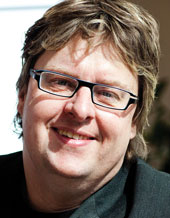The New Line Copenhagen–Ringsted: best-in-class construction
11 April 2014 | By Jan Schneider-Tilli – Banedanmark’s Project Director for the new Copenhagen– Ringsted line
For Global Railway Review, Jan Schneider-Tilli – Banedanmark’s Project Director for the new Copenhagen–Ringsted line – reflects on the first Danish high-speed project as it reaches the halfway line...



